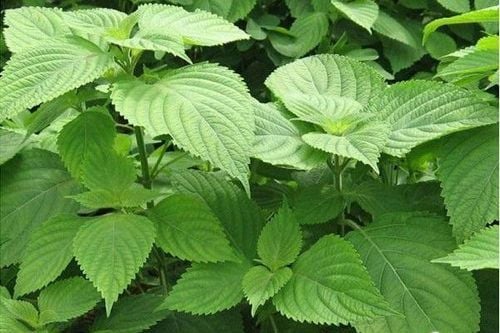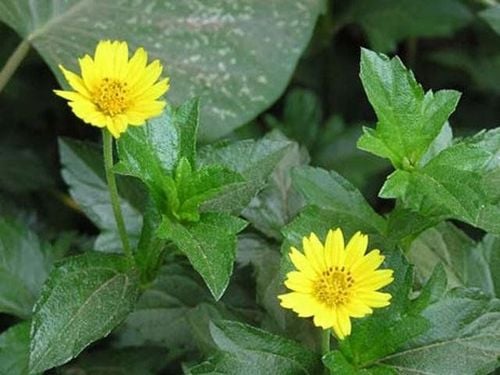This is an automatically translated article.
In daily life, marjoram is known as a spice vegetable, often used as an ingredient to enhance the flavor of many dishes. However, few people know that oregano is also considered a medicine because of its many different uses.
1. Overview of oregano
Marjoram is the name for the leaf part of the marjoram plant. This is a tree with a square stem, an average height of about 30 - 50cm, easy to grow and develop. Oregano grows symmetrically, the edges of the leaves are serrated, about 2 - 5 cm long.
Marjoram with the scientific name is Elsholtzia ciliate, also known as pseudocereal or nettle. Oregano has a spicy taste and pleasant aroma due to the presence of essential oils. Many people confuse marjoram and perilla leaves due to their similarities in appearance, but these are two distinct vegetables. The leaves of oregano are smaller than perilla and the upper surface of the marjoram leaves is bright green. Meanwhile, perilla leaves have more purple color, usually concentrated on the underside of the leaf or both sides.
SEE ALSO: What are the benefits of eating oregano?
2. What are the benefits of eating oregano?
In oriental medicine, oregano has long been considered a medicine because of its many uses, including:
Reduce acne, whiten skin: this is a popular and interested use of oregano. . New types of inflammatory acne, pimples that appear can be treated with oregano. Usage is as follows: oregano is washed, crushed to get water, then apply oregano juice to the acne area, let it dry and wash it off with water. It can be repeated until the pimple is flat and small. With the use of skin whitening, oregano is usually washed and boiled with some other ingredients such as salt, lemon, perilla or wormwood in about 500 ml of water. Then, use this mixture to steam your face for about 15 minutes. Using oregano in the above way for about 2 to 3 weeks continuously can help whiter and brighter skin. However, if the skin has signs of irritation such as itching, red rash, red swollen acne spots, more severe, you should stop using immediately and seek a dermatologist for advice and treatment.

Rau kinh giới có thể giúp giảm mụn, làm trắng da
Cure colds and coughs: The changing season is a time when you are prone to diseases related to the respiratory tract such as respiratory infections, colds, coughs. To relieve symptoms and recover quickly, patients can use oregano leaves in combination with some other vegetables such as perilla, wormwood to extract water and drink 2-3 times a day. Allergic treatment: people with allergies often appear red and itchy on the skin. Using oregano, especially the tops, pounding on the skin with a rash or rubbing it directly has the effect of reducing local itching. However, when using oregano to treat allergies, if the patient sees widespread erythema, increased itching, chest pain, difficulty breathing, it is necessary to stop using oregano immediately and to the muscles. nearest medical facility for examination and treatment. Hemostasis: Patients with nosebleeds, bloody urine or bloody stools can dry oregano leaves, crush them and drink with water 2-3 times a day. Treatment of heat rash in young children: Fresh oregano is picked, washed and cooked to get water to drink or bathe, which is a common way to treat heat rash or skin boils in young children. The uses of oregano leaves are quite diverse and have been proven by scientific evidence. However, each person's response is different. Therefore, if after using oregano leaves for treatment, unusual symptoms such as an itchy rash, fatigue, shortness of breath, chest pain, nausea and vomiting appear, you should stop using it immediately. and go to the nearest medical facility for further examination and treatment.
Please dial HOTLINE for more information or register for an appointment HERE. Download MyVinmec app to make appointments faster and to manage your bookings easily.













